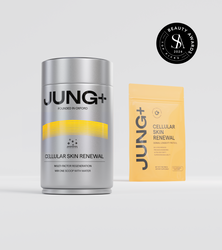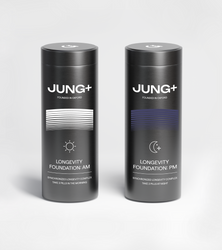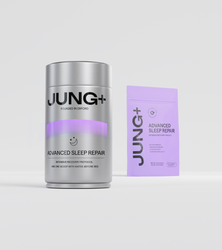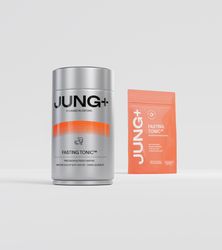Over time, our joints, which are subjected to constant mechanical pressure, can wear down, leading to pain and strain during movement. Various joint diseases that occur with aging often result in the destruction of cartilage tissue, which can subsequently damage ligaments, muscles, and even bones.
The most important component of healthy cartilage is chondroitin sulfate, which contributes to joint integrity by retaining water, increasing elasticity, and preventing cartilage breakdown over time.
In this article, we’ll explore the benefits of chondroitin not only for joint health but also for overall longevity. Whether you're trying to maintain mobility as you age or seeking relief from joint discomfort, understanding how chondroitin works can help you make informed choices for long-term joint health.
What Is Chondroitin?
Chondroitin (or chondroitin sulfates) is a naturally occurring compound found in the connective tissues of the body. Oswald Schmiedeberg was the first to isolate chondroitin and describe its chemical structure in 1891. It’s a glycosaminoglycan, also known as a glycated protein, which is a long chain of sugar molecules linked to amino acid residues (1).
Chondroitin is best known as a major component of cartilage, where it helps maintain structural integrity, flexibility, and normal function. But that’s just part of its broader biological role.
Chondroitin plays a wide range of roles, including adhesion, cell proliferation and migration, extracellular matrix assembly, tissue repair, coagulation, and immune response modulation (2). It also protects cells from mechanical damage by acting as a shock absorber (3).
How Chondroitin Contributes to Cartilage Structure and Function
Chondroitin in joints is a key part of a structure known as aggrecan, a major component of the cartilage extracellular matrix (4).
Aggrecan is made up of:
-
A core protein that acts as the foundation of the complex
-
Chondroitin sulfate and keratan sulfate, which are negatively charged and attract water, contributing to cartilage hydration and resilience
-
A binding region that connects aggrecan to hyaluronic acid, forming large, complex structures
As part of this complex, chondroitin helps:
-
Provide elasticity and support to matrix components
-
Retain water, giving cartilage its gel-like consistency and resistance to mechanical stress
-
Stimulate the production of proteoglycans and type II collagen to maintain and protect cartilage
The Benefits of Chondroitin for Joint Health
As a central component of aggrecan, chondroitin contributes to joint health and longevity in the following ways:
-
It is highly negatively charged, which helps it attract and retain water for smooth, pain-free joint movement (3)
-
Inhibits cartilage-degrading enzymes that drive joint degeneration (5)
-
Stimulates chondrocytes (cartilage-producing cells) to make collagen type II, aggrecan, and hyaluronic acid (5)
-
Improves synovial fluid viscosity, enhancing joint lubrication (6)
-
Reduces oxidative stress by lowering reactive oxygen species (7)
Age-related reductions in chondroitin levels are associated with diseases like osteoarthritis, which causes chronic pain and limited mobility. In 2023, osteoarthritis affected 240 million people globally (8). Among people aged 70 and older, it ranked as the seventh leading cause of years lived with disability (9).
Maintaining healthy chondroitin levels is critical. Supplementation helps manage osteoarthritis via multiple mechanisms:
-
Reduces peripheral nerve sensitization, lowering pain signaling in the joints (10)
-
Lowers cartilage degradation biomarkers like CTX-II, correlating with reduced breakdown and symptom relief (11)
-
Delays disease progression, reducing the need for NSAIDs and pain medications over time (12)
How Chondroitin Manages Inflammation
Chondroitin also plays a key role in controlling inflammation, a major factor in joint degradation. It helps to:
-
Inhibits matrix metalloproteinases (MMP-1, MMP-3, MMP-13) and aggrecanases that break down cartilage (5, 13)
-
Reduces levels of IL-1β, TNF-α, and IL-6, inflammatory cytokines involved in joint disease (14)
-
Lowers prostaglandin E2, a key mediator of inflammation and pain in osteoarthritis (14)
-
Modulates the NF-κB pathway, which regulates inflammatory gene expression (15)
-
Helps control inducible nitric oxide synthase and ROS levels (8)
By targeting inflammation, chondroitin helps preserve cartilage and slows the progression of joint degeneration.
Dietary Sources vs. Supplements
While you can get small amounts of chondroitin from food, reaching therapeutic levels through diet alone is extremely difficult.
Natural Food Sources of Chondroitin:
-
Bone broth: Made from slow-cooked animal bones—contains chondroitin, collagen, and glycosaminoglycans
-
Cartilaginous meats: Like oxtail, pig’s feet, chicken feet, beef tendons, and trachea
-
Shellfish cartilage: Found in shrimp, crab, and lobster
-
Animal organs: Trachea and joint tissues contain trace amounts
However, these foods contribute very little to people's diets overall. For therapeutic effects, you need 1,200–1,500 mg/day of high-quality chondroitin. One study found 50 mL of chicken bone broth contained just 10.7 mg of chondroitin (16)—which means you'd need to drink 7 liters per day to meet the target dose!
Supplementation Advantages:
-
Precise dosing
-
Easier daily use
-
Available in vegetarian/shellfish-free options
-
Zero calories—ideal for fasting regimens
-
More affordable than eating cartilaginous meats daily
Incorporating Chondroitin into Your Daily Regimen
Adding chondroitin to your routine can greatly benefit joint health and overall mobility. If you're aiming for long-term improvement, here’s how to make supplementation easier and more consistent:
Start with a reliable supplement. Jung's Longevity Foundation PM formula is designed to support the body’s nighttime repair processes. Its formula includes chondroitin sulfate and other synergistic ingredients:
-
Apigenin: Lowers cortisol and combats stress-related inflammation
-
Spermidine: Activates autophagy, promoting cellular renewal
-
Olive Leaf Extract (Oleuropein): Potent antioxidant and cartilage protector
-
Zinc (Gluconate): Supports immune health and collagen production
-
Astragalus: Anti-inflammatory adaptogen that supports joint and immune function
Simply take two tablets before bed—no complicated schedules required.
Other tips for the greatest results:
-
Take with dinner or before bed
-
Be consistent by taking it daily
-
Stay hydrated and keep moving
Potential Side Effects and Considerations
Chondroitin is generally safe when taken in recommended doses (1,200–1,500 mg/day). However, some individuals may experience mild side effects, such as:
-
Gastrointestinal discomfort (bloating, nausea, diarrhea)
-
Allergic reactions, especially if sourced from shellfish—check product labels
-
Mild swelling in extremities (rare)
Use caution if you have:
-
Blood clotting issues or take anticoagulants (due to mild blood-thinning effects)
-
Diabetes or insulin sensitivity
-
Asthma
-
Pregnancy or breastfeeding (safety data is limited)
To minimize the risk of side effects:
-
Always consult your healthcare provider first
-
Start with a low dose to assess tolerance
-
Take with food to reduce stomach issues
-
Choose high-quality products like Jung's Longevity Foundation
Looking Ahead: The Role of Chondroitin in Longevity
Chondroitin’s role in supporting joint health is well established, but its potential impact on overall longevity is just beginning to unfold. By fighting inflammation, protecting cells, improving metabolism, and potentially supporting brain health, chondroitin could play a broader role in aging well.
As research evolves, we may discover that this structural molecule offers foundational support for a longer, healthier life, extending its impact far beyond the joints.
References:
-
Biochemistry, Glycosaminoglycans (2023). StatPearls.
-
Diverse Functions of Glycosaminoglycans in Infectious Diseases (2010). Progress in Molecular Biology and Translational Science.
-
Structure and function of aggrecan (2002). Cell Research.
-
Essentials of Glycobiology (2022). Cold Spring Harbor Laboratory Press.
-
Chondroitin Sulfate Enhances Proliferation and Migration via Inducing β-Catenin and Intracellular ROS as Well as Suppressing Metalloproteinases through Akt/NF-κB Pathway Inhibition in Human Chondrocytes (2022). The Journal of Nutrition, Health and Aging.
-
Chondroitin sulfate increases hyaluronan production by human synoviocytes through differential regulation of hyaluronan synthases: role of p38 and Akt (2009). Arthritis & Rheumatism.
-
Chondroitin-4-sulphate inhibits NF-kB translocation and caspase activation in collagen-induced arthritis in mice (2008). Osteoarthritis and Cartilage.
-
Epidemiology of osteoarthritis (2023). Osteoarthritis Cartilage.
-
Global, regional, and national burden of osteoarthritis, 1990–2020 and projections to 2050: a systematic analysis for the Global Burden of Disease Study 2021 (2023). The Lancet Rheumatology.
-
Chondroitin for osteoarthritis (2015). Cochrane Database of Systematic Reviews.
-
CTX-II and YKL-40 in early diagnosis and treatment evaluation of osteoarthritis (2018). Experimental and Therapeutic Medicine.
-
Highly purified chondroitin sulfate: a literature review on clinical efficacy and pharmacoeconomic aspects in osteoarthritis treatment (2021). Aging Clinical and Experimental Research.
-
Comparative Analysis of the Bioactive Compounds in Chicken Cartilage: Protective Effects of Chondroitin Sulfate and Type II Collagen Peptides Against Osteoarthritis Involve Gut Microbiota (2022). Nutrition and Food Science Technology.
-
A potential role of chondroitin sulfate on bone in osteoarthritis: inhibition of prostaglandin E2 and matrix metalloproteinases synthesis in interleukin-1β- stimulated osteoblasts (2012). Osteoarthritis and Cartilage.
-
Modulation of inflammation by chondroitin sulfate (2020). Osteoarthritis Cartilage.
-
Hyaluronan and chondroitin sulfate in chicken–vegetable bone broth delay osteoporosis progression (2024). Journal of Food Science.




